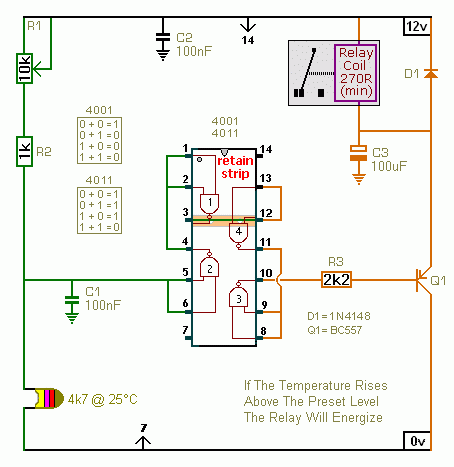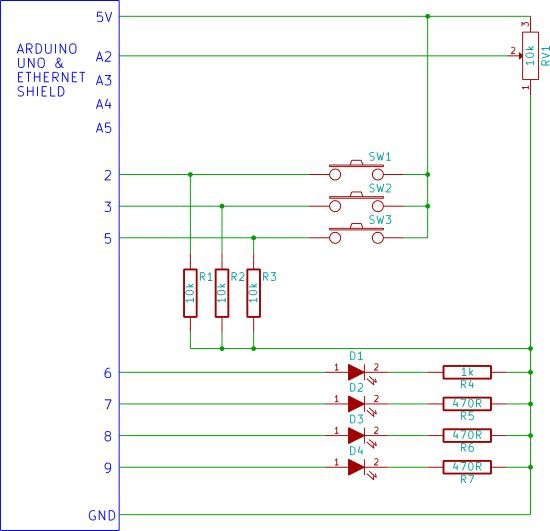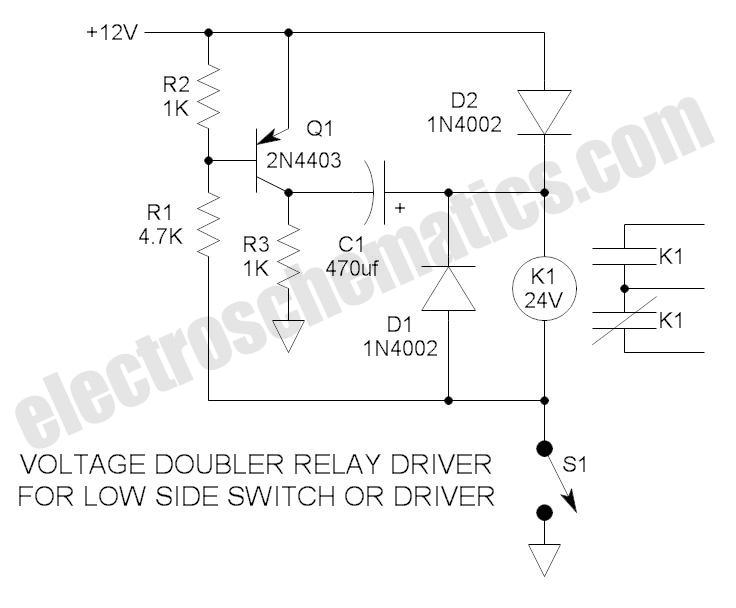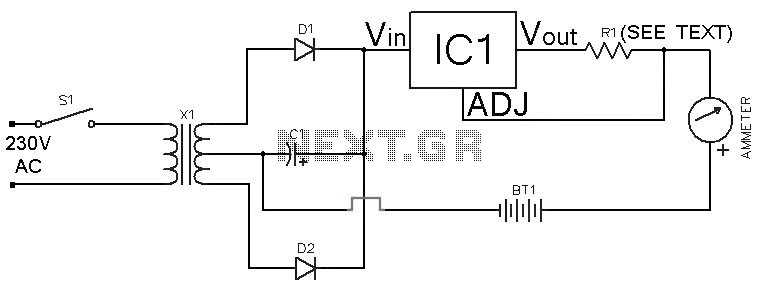
The Car Relay Charger
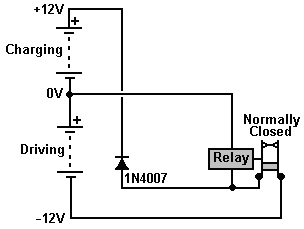
This document explains the adaptation of a standard 40 amp car relay, converting it from a "normally open" contact configuration to a "normally closed" contact configuration. While it is possible to perform this modification, automotive relays with "normally closed" contacts are readily available and inexpensive. The modified relay is wired to power itself through its own contacts, leading to a flow of current through the relay coil winding, which operates the contact and opens it. This action interrupts the current flowing through the relay's coil, resulting in the contacts closing again, thus initiating a repetitive cycle.
The described circuit utilizes a 40 amp automotive relay, which typically features a coil and a set of contacts. In its original configuration, the relay operates as a normally open switch, meaning that it allows current to flow only when the coil is energized. By modifying the relay to function as a normally closed switch, the circuit allows current to flow until the relay is activated, at which point the contacts open and interrupt the current.
To achieve this modification, the relay's wiring must be altered so that the coil is energized by the current flowing through the contacts. When the relay is initially powered, the current flows through the normally closed contacts, energizing the coil. This activation causes the relay to switch, opening the contacts and halting the current flow through the coil. As a result, the coil de-energizes, allowing the contacts to close again, and the cycle repeats.
This self-latching configuration can be useful in various applications where a temporary interruption of power is required. However, it is essential to consider the specifications of the relay, including the coil voltage and current ratings, to ensure proper operation and prevent damage. Additionally, while this modification can be performed, it is advisable to source a relay designed for normally closed operation for simplicity and reliability.Here he adapts an ordinary 40 amp car relay, converting it from having a “normally open” contact, to operating with a “normally closed” contact. It is not necessary for you to do this as automotive relays with “normally closed” contacts are readily available and are not expensive.
The relay is then wired up so that it powers itself through its own contacts. This causes a current to flow through the relay coil winding, operating the contact and opening it. This cuts off the current through the relay’s own coil, causing the contacts to close again and the process starts all over again. 🔗 External reference
The described circuit utilizes a 40 amp automotive relay, which typically features a coil and a set of contacts. In its original configuration, the relay operates as a normally open switch, meaning that it allows current to flow only when the coil is energized. By modifying the relay to function as a normally closed switch, the circuit allows current to flow until the relay is activated, at which point the contacts open and interrupt the current.
To achieve this modification, the relay's wiring must be altered so that the coil is energized by the current flowing through the contacts. When the relay is initially powered, the current flows through the normally closed contacts, energizing the coil. This activation causes the relay to switch, opening the contacts and halting the current flow through the coil. As a result, the coil de-energizes, allowing the contacts to close again, and the cycle repeats.
This self-latching configuration can be useful in various applications where a temporary interruption of power is required. However, it is essential to consider the specifications of the relay, including the coil voltage and current ratings, to ensure proper operation and prevent damage. Additionally, while this modification can be performed, it is advisable to source a relay designed for normally closed operation for simplicity and reliability.Here he adapts an ordinary 40 amp car relay, converting it from having a “normally open” contact, to operating with a “normally closed” contact. It is not necessary for you to do this as automotive relays with “normally closed” contacts are readily available and are not expensive.
The relay is then wired up so that it powers itself through its own contacts. This causes a current to flow through the relay coil winding, operating the contact and opening it. This cuts off the current through the relay’s own coil, causing the contacts to close again and the process starts all over again. 🔗 External reference
